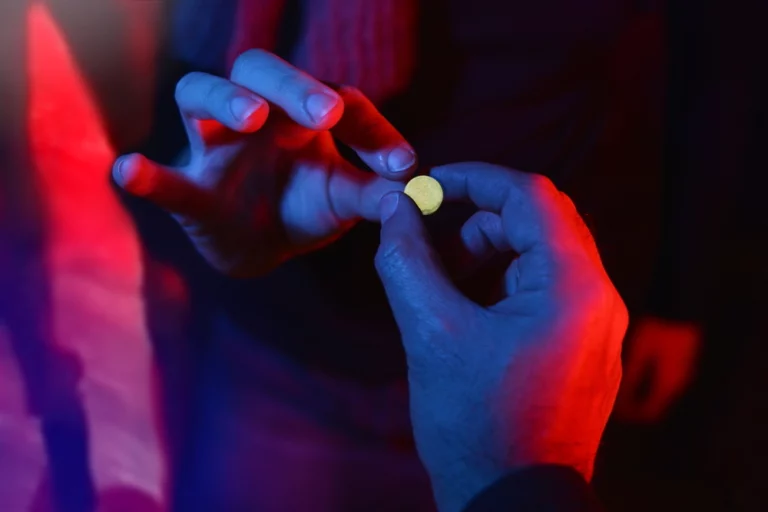How to Recognize & Escape the 7 Different Stages of Trauma Bonding
Trauma bonding unfolds when an abuser uses manipulation, gaslighting, and recurring patterns of abuse to make their victim form a strong bond with them. During trauma bonding, it can seem impossible for the victim to exit the relationship even though it damages their mental and physical health. There are seven stages of trauma bonding. These stages damage the victim’s sense of self and connection with reality. In this article, we discuss what happens during trauma bonding, the tactics an abuser uses, how it impacts the victim, and how to break free from a traumatic relationship.
7 Stages of Trauma Bonding
The cycle of abuse typically starts with ‘dreamy’ or seemingly perfect relationships and eventually spirals into an abusive situation. The victim of the relationship will form an emotional bond with their abuser, despite any harm they may experience. This bond makes it difficult for the victim to leave their abusive relationship. While there is no set guideline for trauma bonding, there are seven stages of trauma bonding that are typically seen in these situations. The seven stages of trauma bonding wounds the victim’s perception of reality, their perception of the world, and their relationship with themselves. Understanding these stages can lead to victims breaking free of abusive relationships and leading happier lives.
To learn more about what trauma is and how it is treated, read more here.

Stage 1: Love Bombing
Love bombing is all about setting an intense and overwhelming display of affection to establish the idea of a ‘perfect relationship’ where the victim is subjected to elaborate praises and flattery. This stage is a tactic of emotional abuse and is used to quickly create a deep emotional connection between the victim and the abuser, resulting in a false sense of security and trust. This stage creates a subtle road for the abuser to:
- Target the victim’s hopes, desires, emotions, and dreams. For instance, it involves the abuser saying, “No one else in the world will love you the way I do,” or “Nobody can offer you what I can.”
- Persuade the victim to trust the abuser fully
- Develop strong feelings of validation with the victim
- Prove that they have the best intentions for the victim
Stage 2: Trust and Dependency
After the love bombing stage, the victim will have formed an emotional attachment to their abuser and, in some cases, become codependent on the relationship. This is where the abuser puts the victim’s trust and dependency to the test. This aims to satisfy the abusers’ narcissistic tendencies, proving that the victim will put their relationship above all else. If the victim questions the abusive partner, it is typically met with defensive statements and abusive behaviors. The victim then begins to feel guilty for questioning their partner, even though doubts are a healthy part of any relationship.
Stage 3: Criticism
Once an abuser has your trust, they may begin to point out that some of your qualities are problematic. Criticism, at this point, can feel like a sudden shock when the victim has only just experienced the love bombing stage.
The criticism stage usually unfolds after the abuser fully gains the victim’s trust. The victim will usually notice these criticisms during heated arguments, where the abuser will shift all the blame onto their partner. The criticism phase usually involves the victim over-apologizing and taking the blame, even though they weren’t at fault. The abuser will then forgive the victim and can make statements such as “No one would put up with this like I do,” or “You’re lucky you’re with me, or this would not be okay.” These kinds of statements can make the victim feel as though they are responsible for how the abuser acts and will try to appease the abuser at any cost. This circle of intense criticism and over-apologizing eventually becomes the foundation for the trauma bond.
Stage 4: Manipulation and Gaslighting
After criticism comes the psychological abuse of manipulation and gaslighting. This is where the victim begins to question their worldview and reality. A gaslighter will always refuse to take responsibility for their actions. They will continue to shift the blame on their partners. Once they push their partners to the edge, gaslighters will display sudden calmness. This is where the victim begins to feel that fighting with their abuser will never amount to anything good, exposing them to what is called reactive abuse.
Reactive abuse occurs when the victim reacts to the abuse they’re facing. The victim may end up spewing insults, screaming, or even attacking the abuser physically. The abuser then uses this situation to prove that the victim is, in fact, the abuser. After engaging in reactive abuse, the victim begins to feel extremely guilty.

Stage 5: Resignation and Giving Up
At some point during trauma bonding, the victim begins to give up to keep further conflicts at bay. This is when the fawn trauma response takes effect, where the victim displays people-pleasing behaviors to try and make the relationship work.
Although the victim may, to some extent, know they’re being manipulated, their awareness is still not strong enough to end the relationship. This is because the victim still questions whether they must hold the abuser responsible.
Based on the abuse’s nature and the relationship’s length, the victim establishes heightened dependency on the abuser to prevent further conflicts. This dependency could be in the form of marriage, being financially reliant on the abuser, or having children.
Safety is another reason why victims cannot break free from their abusers. The victims often fear that the domestic dispute could get violent or deadly if they threaten to leave.
Stage 6: Loss of Self
There is a constant loss of self throughout the stages of a trauma bond. The victim feels tremendous pain and isolation from the world they once enjoyed living in. Due to losing their personal boundaries and identity, many people who leave abusive relationships may have low self-esteem and not know how to be their previous selves. This loss of self causes the victim to become disconnected from their family, friends, and anything else that the abuser perceives as a threat. Abusers will isolate their victims so that they do not have a support system, resulting in the victim being unable or unlikely to leave the toxic relationship.
Stage 7: Addiction to the Cycle
The stages of trauma bonding are often cyclical. Every intense conflict is followed by a cool down or a romantic period. During this period, the abuser may even show how sorry they are and unfold the love bombing process all over again. This makes the victim feel loved, desired, and relieved, thereby causing them to be more dependent on the abusive cycle than ever. This dependency ultimately ends up becoming an addiction.
Before long, the victim may not notice the cycle of abuse that is occurring and can believe that all relationships are in this kind of pattern. While healthy relationships do not operate like that, it can be difficult for a victim to understand. This is why it is essential to recognize the stages of trauma bonding and abuse to ensure that you or a loved one do not have to experience the abuse.

How Can You Escape Trauma Bonding?
It is common to see many victims of these abusive relationships not label the behavior as abuse or trauma. However, experiencing these events and behaviors is a form of physical or emotional trauma. Trauma can shock and confuse the brain. It can trigger stress responses such as post-traumatic stress disorder (PTSD). Trauma can also cause several mental health conditions and substance use disorders. Prolonged exposure to trauma alters your brain chemistry, limbic system, and hormones.
The act of leaving can be the most dangerous step in a traumatic relationship. For this reason, it is critical to have a support system, either family members or professional support, you can access immediately. This helps you plan your escape quietly, safely, and without conflicts when the abuser is away. Once the victim is removed from the toxic environment, it is vital to begin the healing journey to ensure the future well-being of the victim.
Call Oasis Recovery Center Today to Learn More
If you’re seeking trauma treatment in North Carolina, don’t hesitate to call our specialists the first chance you get. You don’t have to cope with trauma alone. Once you arrive at our recovery center, we craft a personalized healing plan just for you. Take the difficult step towards your health and your freedom, and reach out to us today!









